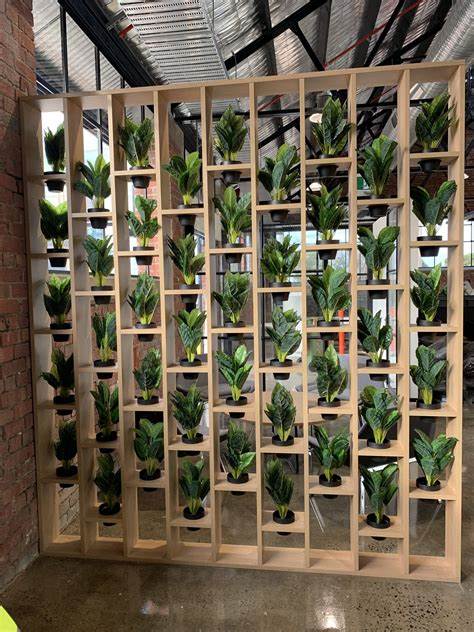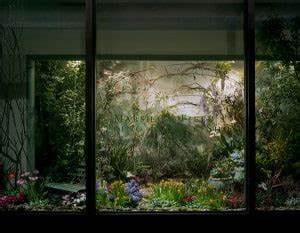
Vertical Garden Wall Materials: A Guide to Selection and Implementation
Introduction
In this article, we will explore the world of vertical garden wall materials, their significance, applications, and relevance in domestic and commercial settings.
Historical Background
Vertical gardens have a long-standing history that stretches back centuries. We will provide an overview of their historical usage and the evolution of materials employed in constructing vertical garden walls. Additionally, we will highlight ancient civilizations that utilized these materials to create breathtaking vertical gardens.
Key Concepts and Definitions
To gain a better understanding of vertical garden wall materials, we will define the term itself and explain key concepts such as irrigation systems, support structures, and planting mediums. We will also emphasize the importance of properly selecting and combining materials.

Main Discussion Points
Different types of vertical garden wall materials
Green wall systems: These systems involve growing plants directly into the wall or supporting them with a structure. They offer a lush and vibrant aesthetic.
Living wall panels: These pre-grown panels consist of various plants and are easily installed on vertical surfaces. They offer flexibility and ease of maintenance.
Modular planting systems: These systems make use of modular units that can be individually planted and arranged to create a tailor-made vertical garden. They offer versatility and scalability.
Factors to consider when choosing vertical garden wall materials
Climate and weather conditions: The selected materials should be able to withstand the specific climate and weather patterns of the location to ensure the longevity of the vertical garden.
Maintenance requirements: Different materials have varying maintenance needs. It is crucial to consider the time and effort required to maintain the vertical garden wall.
Aesthetics and design flexibility: The materials should align with the desired aesthetic of the vertical garden and offer flexibility in terms of design and arrangement.

Case Studies or Examples
Vertical garden wall project in a commercial building
Selection of materials and design considerations: We will explore a real-life example of a vertical garden wall project in a commercial building, discussing the materials chosen and the design factors considered.
Benefits and challenges faced during implementation: The benefits and challenges encountered during the implementation of the project will be highlighted, providing valuable insights for future projects.
Residential vertical garden wall example
Use of specific materials to create a vertical garden in a limited space: We will showcase a residential vertical garden wall example, focusing on the materials used to maximize space and create a visually appealing garden.
Successes and lessons learned from the project: The successes and lessons learned from the residential vertical garden wall project will be discussed, offering valuable tips for homeowners.
Current Trends or Developments
Advancements in irrigation systems for vertical garden walls: We will explore the latest advancements in irrigation systems, including automated and efficient solutions, to ensure the optimal health of vertical garden wall materials.
Use of sustainable and eco-friendly materials in vertical gardens: The growing trend of using sustainable and eco-friendly materials in vertical gardens will be examined, emphasizing the importance of environmentally conscious choices.
Integration of technology for automated monitoring and maintenance: We will discuss the integration of technology in vertical garden wall materials, enabling automated monitoring and maintenance for ease and efficiency.
Challenges or Controversies
Debate over the environmental impact of certain materials: There is an ongoing debate regarding the environmental impact of certain materials used in vertical garden walls. We will provide an overview of the arguments for and against these materials.

Cost considerations and affordability of vertical garden wall materials: Cost is a significant factor when selecting vertical garden wall materials. We will explore the affordability and long-term cost considerations associated with different materials.
Maintenance challenges and potential limitations of certain materials: Some materials may present maintenance challenges or have limitations in terms of their suitability for specific climates or design requirements. We will discuss these challenges and limitations.
Future Outlook
Potential for further research and development in vertical garden wall materials: We will highlight the potential for future research and development in vertical garden wall materials, including advancements in durability, aesthetics, and environmental impact.
Integration of vertical garden walls in urban planning and architecture: Vertical garden walls have the potential to play a significant role in urban planning and architecture. We will explore their integration and benefits in these areas.
Benefits of vertical garden wall materials for sustainable and green building practices: We will emphasize the benefits of vertical garden wall materials in sustainable and green building practices, such as improved air quality, reduced energy consumption, and enhanced aesthetics.
Conclusion
In conclusion, vertical garden wall materials offer endless possibilities for creating stunning and sustainable green spaces. By understanding the historical background, key concepts, and current trends, we can make informed decisions when selecting and implementing vertical garden wall materials.
References
A comprehensive list of sources, articles, and research papers will be provided for further reading and research on vertical garden wall materials.




